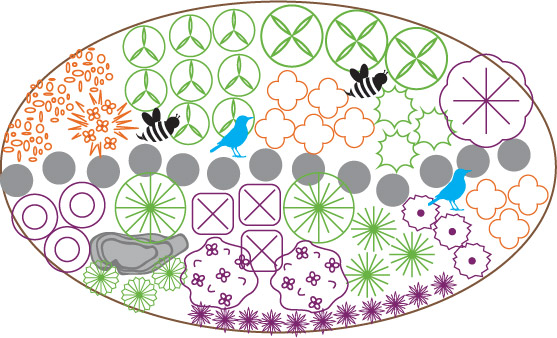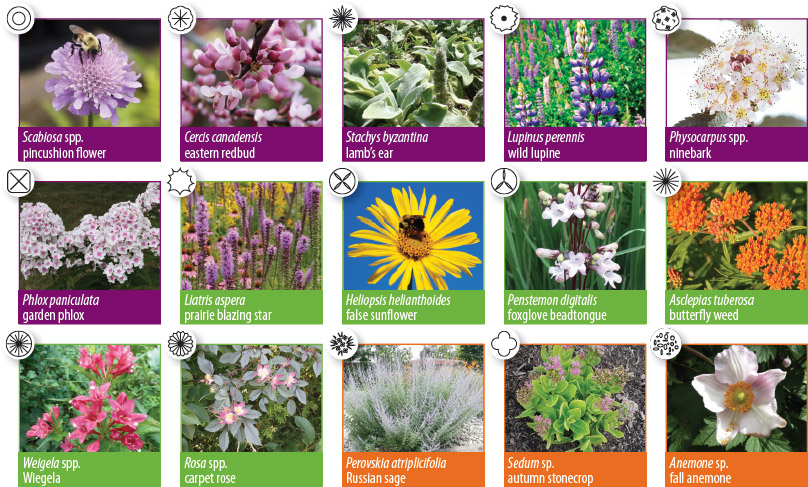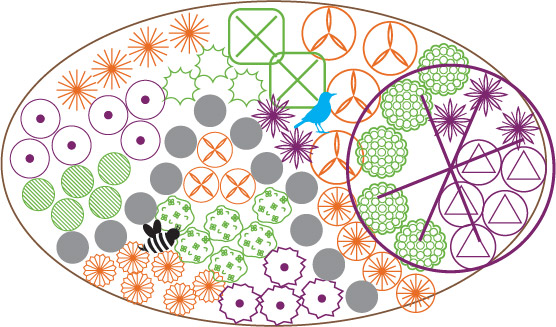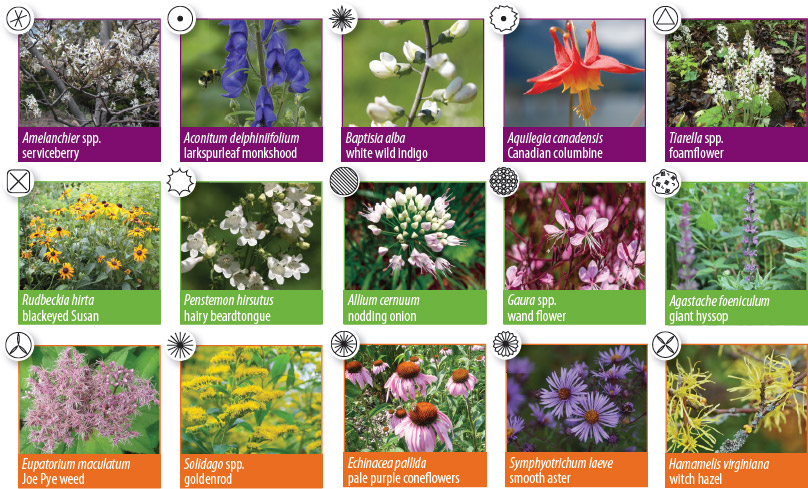On this page
The world’s food supply depends on pollinators. Birds, bats, bees, butterflies, beetles, and other beneficial insects and small mammals pollinate plants that:
- bring us countless fruits, vegetables, and nuts
- support half of the world’s oils, fibers and raw materials
- prevent soil erosion
- increase carbon sequestration
A pollinator garden supports and protects these important creatures by providing food and shelter.
- Use a variety of flower shapes to attract different types of pollinators
- Use a mix of plants which flower at different times of the year so you have blooms all season
- Choose native plant species
- Let plant debris stand over winter to provide shelter for insects and food for birds
- Add bird baths and bee houses to keep insects and birds returning to your garden each year
- Avoid using pesticides and herbicides,—even natural or homemade versions can harm pollinators
- Use containers in small spaces
Pollinator gardening
Add 5 centimetres (2 inches) of organic material (e.g. manure, compost, leaf mold) every two years to create a rich, nutritious soil, and remove the need to fertilize.
For the first few weeks, keep the top 2.5 centimetres (1 inch) of soil moist. After that, water once a week until plants are established (one to two seasons).
Adding 5 to 10 centimetres (2 to 4 inches) of mulch every few years to reduce watering needs, prevent weeds and increase plant survival and growth.
Pollinator garden design—full sun
At least six hours of direct sunlight


Pollinator-friendly plants full sun
Spring interest
- Cercis canadensis, eastern redbud
- Lupinus perennis, wild lupine
- Physocarpus species, ninebark
- Phlox paniculata, garden phlox
- Scabiosa species, pincushion flower
- Stachys byzantina, lamb’s ear
Summer interest
- Asclepias tuberosa, butterfly weed
- Heliopsis helianthoides, false sunflower
- Liatris aspera, prairie blazing star
- Penstemon digitalis, foxglove beadtongue
- Rosa species, carpet rose
- Weigela species, Wiegela
Fall interest
- Anemone species, fall anemone
- Perovskia atriplicifolia, Russian sage
- Sedum species, autumn stonecrop
Printer-friendly: Sun Pollinator Garden plan
Pollinator garden design—part sun
Three to six hours of direct sun a day


Pollinator-friendly plants part sun
Spring interest
- Aconitum delphiniifolium, larkspurleaf monkshood
- Aquilegia canadensis, Canadian columbine
- Amelanchier species, serviceberry
- Baptisia alba, white wild indigo
- Tiarella species, foam flower
Summer interest
- Agastache foeniculum, giant hyssop
- Allium cernuum, nodding onion
- Gaura species, wand flower
- Penstemon hirsutus, hairy beardtongue
- Rudbeckia hirta, blackeyed Susan
Fall interest
- Echinacea pallida, pale purple coneflowers
- Eupatorium maculatum, Joe Pye weed
- Hamamelis virginiana, witch hazel
- Solidago species, goldenrod
- Symphyotrichum laeve, smooth aster
